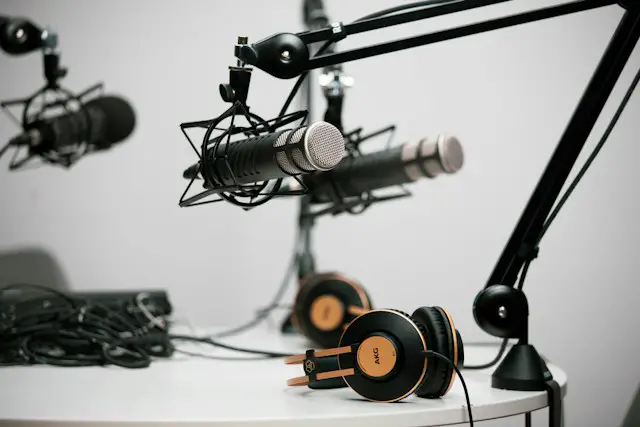If you’ve ever watched a movie and found yourself completely immersed in the story, chances are you have sound design to thank.
Sound design is the process of creating and manipulating audio elements to enhance the storytelling experience in film.
From the sound of footsteps to the score of the film, sound design plays a crucial role in creating a cohesive and impactful cinematic experience for the audience.
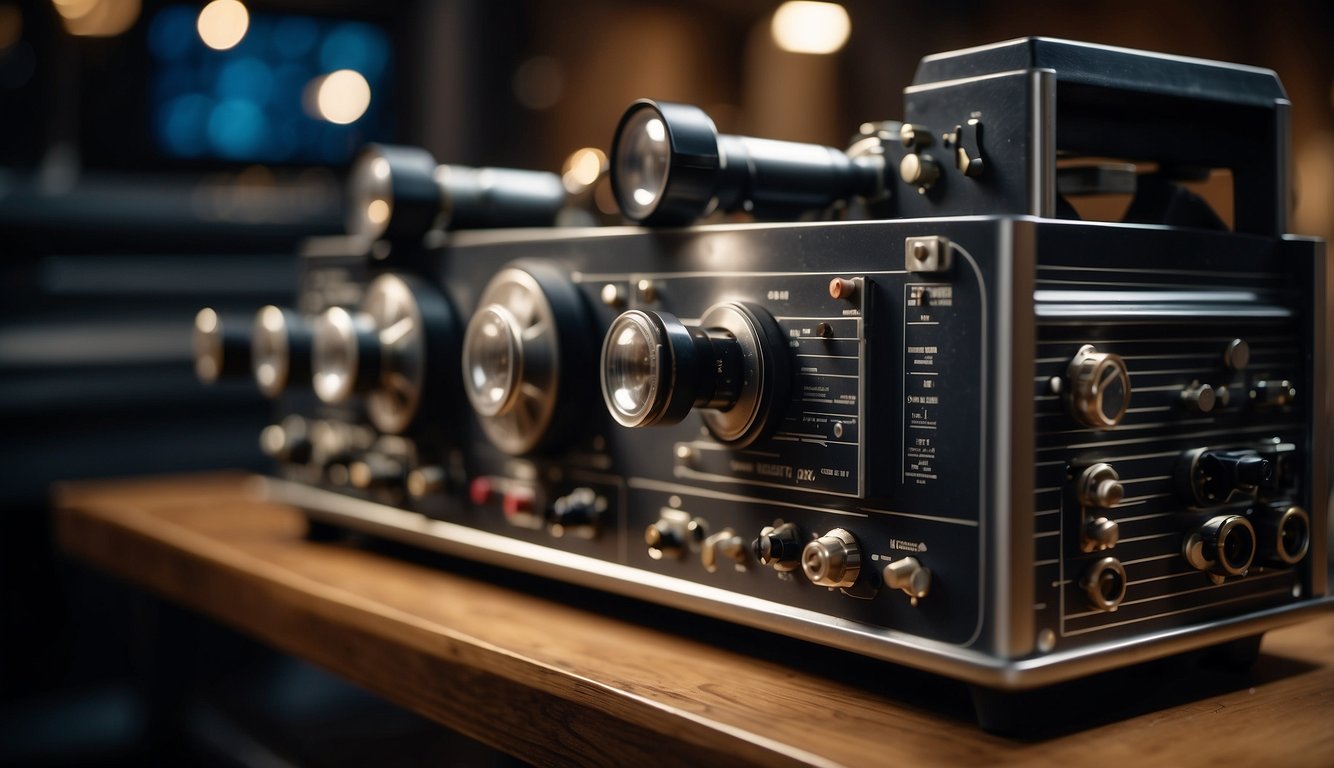
But what exactly goes into sound design, and how can you use it effectively in your own film projects?
In this article, we’ll explore the various components of sound design, including dialogue, sound effects, and music, and how they work together to create a compelling audio experience.
We’ll also discuss the importance of considering your audience when making sound design choices and how sound design can help enhance your story’s emotional impact. Whether you’re a seasoned filmmaker or just starting out, understanding sound design is essential for creating a truly immersive cinematic experience.
The Fundamentals of Sound Design

Defining Sound Design
Sound design is the process of creating and manipulating audio elements to enhance the overall experience of a film. It involves the creation of sound effects, music, and dialogue that blend together seamlessly to create a cohesive audio experience.
The goal of sound design is to immerse the audience in the film’s world and enhance the emotional impact of the story. It is an essential part of filmmaking that requires a deep understanding of audio technology, storytelling, and creative sound design.
Roles and Responsibilities of a Sound Designer
The sound designer is responsible for creating and implementing all audio elements in a film. They work closely with the director, producer, and other post-production team members to ensure that the audio elements complement the visual components of the film.
The sound designer’s responsibilities include recording and editing dialogue, creating sound effects, and selecting and editing music. They must also ensure that all audio elements are mixed and balanced correctly to create a cohesive audio experience.
In addition to technical skills, a sound designer must have a creative mindset and be able to think outside the box to create unique and compelling audio elements. They must also be able to work efficiently under tight deadlines and adapt to changes in the film’s direction.
Overall, sound design is a crucial aspect of the filmmaking process that can significantly enhance the emotional impact of a film. By understanding the fundamentals of sound design and the roles and responsibilities of a sound designer, you can create a more immersive and engaging audio experience for your audience.
Elements of Sound in Film
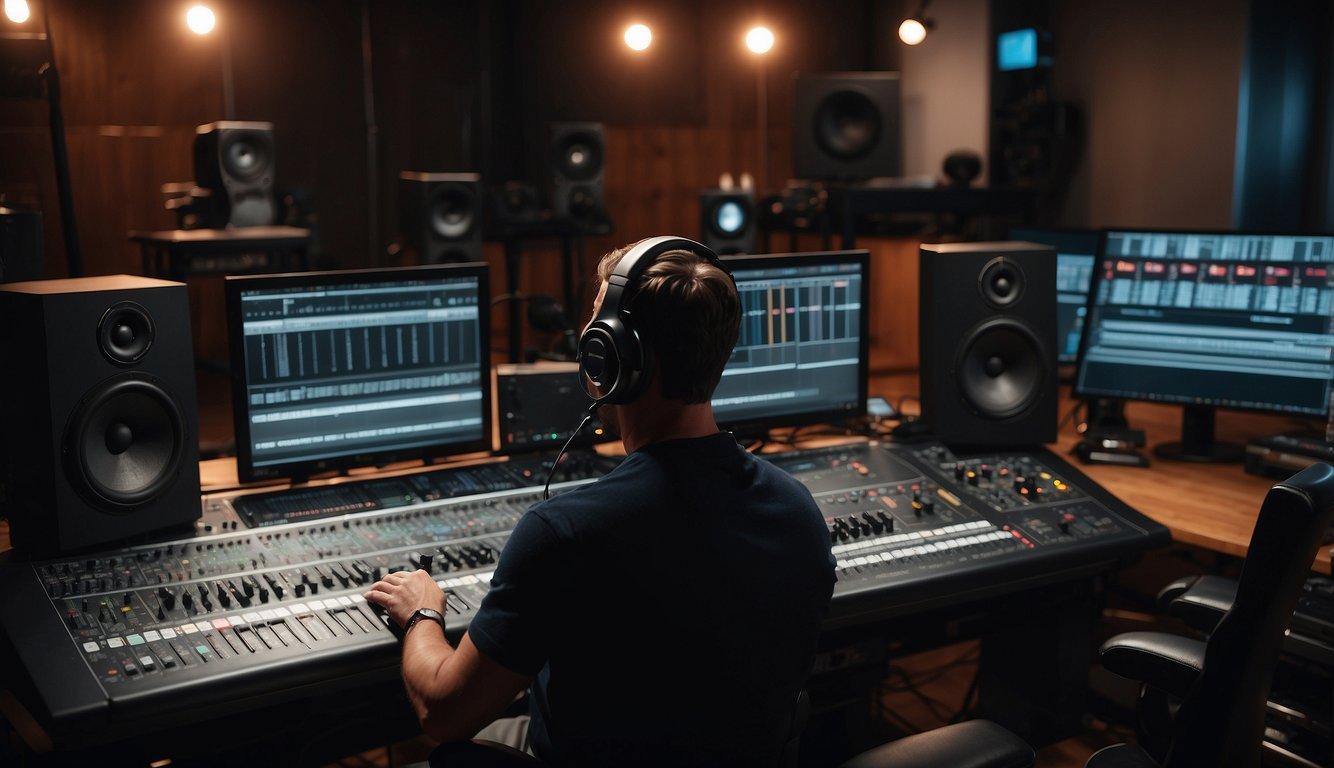
Sound design is an essential element of film production that can make or break the audience’s experience. It encompasses a wide range of sounds, including dialogue, music, and sound effects.
Understanding the various elements of sound in film is crucial to creating a successful soundtrack that enhances the story.
Diegetic and Non-Diegetic Sounds
Diegetic sounds are sounds that exist within the story world, such as dialogue, footsteps, and ambient noise.
On the other hand, non-diegetic sounds are sounds that do not exist within the story world, such as music and voice-overs. Balancing these two types of sounds is essential to creating a cohesive and immersive soundtrack.
Foley Sounds and Their Creation
Foley sounds are sound effects created by foley artists to enhance the realism of a scene. These sounds can include anything from footsteps to the rustling of clothing.
Foley artists use a variety of objects, such as shoes, fabrics, and even vegetables, to create these sounds. Using foley sounds can add depth and texture to a scene, making it feel more realistic.
The Role of Music and Score
Music and score are essential elements of sound design that can evoke emotions and enhance the story.
Music can be used to create tension, suspense, or even humor. The score, on the other hand, is a collection of music that is specifically composed for the film. A well-composed score can elevate a film and make it more memorable.
Voice-Overs and ADR
Voice-overs and Automated Dialogue Replacement (ADR) are techniques used to enhance the dialogue in a film. Voice-overs are recordings of dialogue that are added to the film after filming.
On the other hand, ADR is the process of re-recording dialogue in a studio to improve its quality or replace unusable dialogue due to background noise. These techniques can help to improve the clarity and quality of the dialogue in a film.
Understanding the various elements of sound in film is crucial to creating a successful soundtrack that enhances the story.
By balancing diegetic and non-diegetic sounds, utilizing foley sounds, composing a memorable score, and using voice-overs and ADR when necessary, you can create a soundtrack that immerses the audience in the story and enhances their experience.
The Sound Design Process
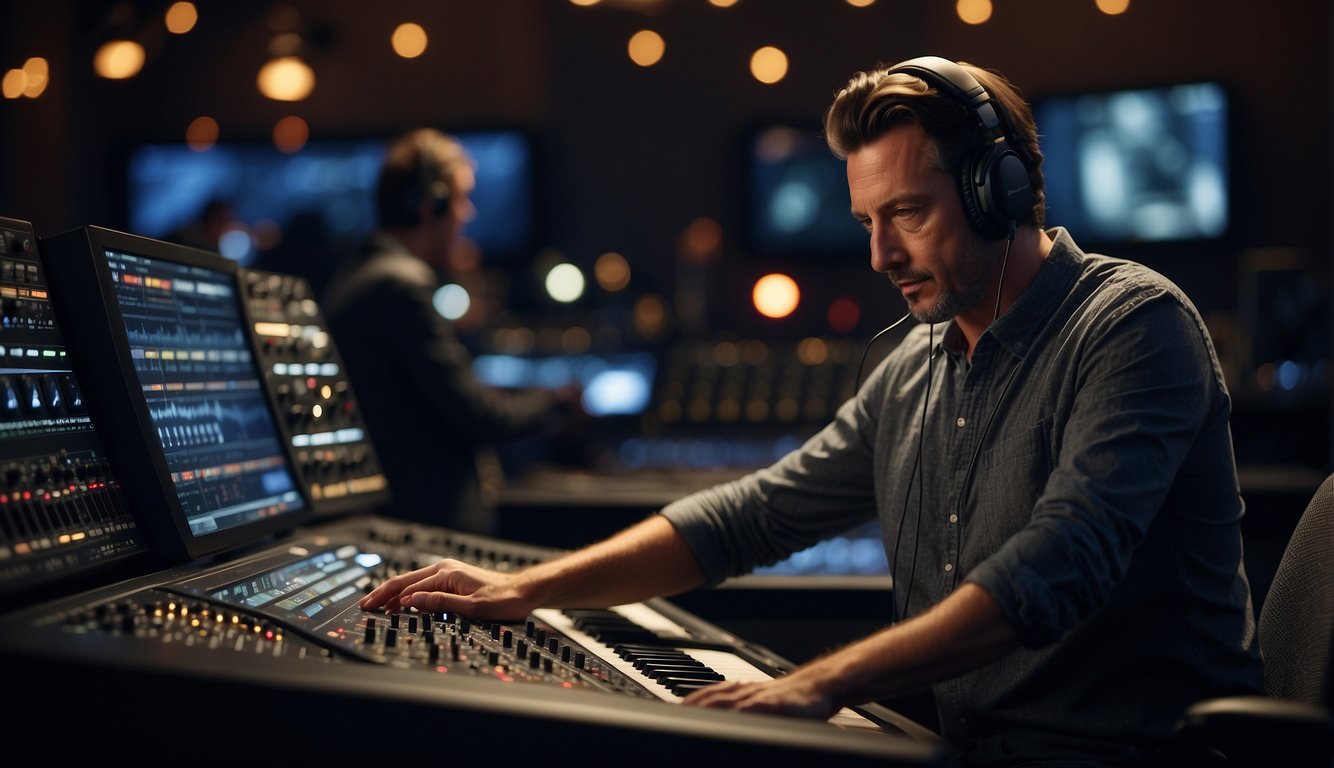
When it comes to sound design in film, the process involves multiple stages. Each stage is important in creating an effective and engaging final product.
Here are the four main stages of the sound design process:
Pre-Production Planning
Before you start recording any audio, it’s important to plan out what you need and how you will get it. This involves creating a detailed script and shot list and deciding on the types of microphones and recording equipment you’ll need. It’s also important to consider any potential background noise or other audio challenges you may face during filming.
Recording and Capturing Audio
Once you have your plan in place, it’s time to start recording. This involves capturing all the dialogue and sound effects needed for the film. Depending on the situation, you may need to use a variety of microphones and recording techniques to get the best possible sound.
Field recording is also an important part of the process, as it allows you to capture natural sounds that can add depth and realism to the final product.
Editing and Mixing
After you’ve captured all of the necessary audio, it’s time to start editing and mixing. This involves using a digital audio workstation (DAW) to manipulate and arrange the audio files. You may need to clean up the audio by removing unwanted background noise or enhancing certain sounds. You’ll also need to mix the audio to ensure everything sounds balanced and cohesive.
Post-Production and Finalizing
Once you’ve edited and mixed all of the audio, it’s time to finalize the sound design. This involves adding any necessary sound effects or music to the film. You’ll also need to ensure all the audio is synced up correctly with the visuals. Finally, you’ll need to export the audio in the appropriate format for the final product.
Overall, the sound design process is crucial to creating a successful film. Following these steps and using the right tools and techniques can create a compelling and engaging final product for your audience.
Technical Aspects of Sound Design
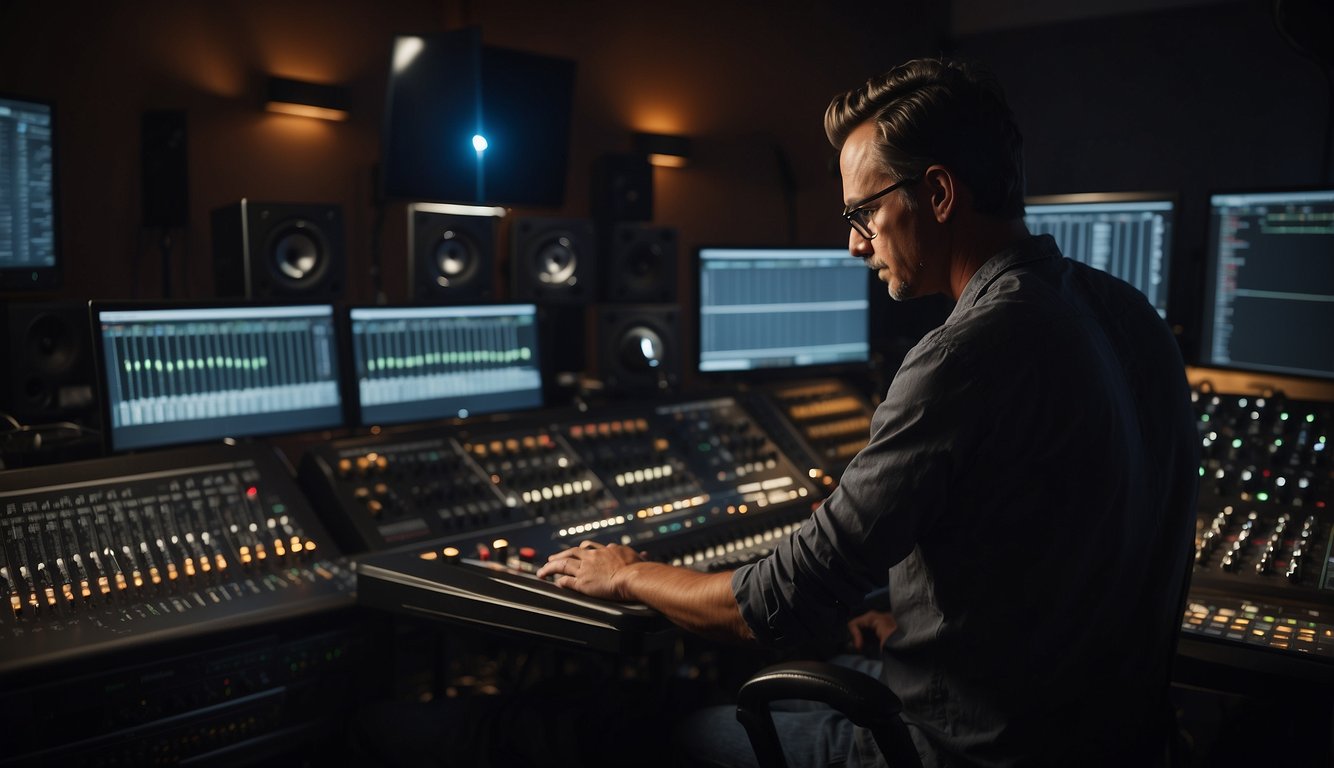
When it comes to sound design in film, there are several technical aspects that you need to consider.
This section will discuss some of the essential tools and techniques used in sound design.
Microphones and Recording Equipment
The first step in sound design is capturing high-quality audio. You must have the right microphones and recording equipment to do this. There are several types of microphones, each with its own unique characteristics.
For example, a shotgun microphone is ideal for capturing dialogue, while a condenser microphone is better suited for recording ambient sounds.
In addition to microphones, you will also need a recording device. This can range from a simple handheld recorder to a more advanced digital recorder. Choosing a recording device that can capture high-quality audio and has the inputs and outputs for your microphones is important.
Digital Audio Workstations (DAWs)
Once you have recorded your audio, you must edit and manipulate it using a digital audio workstation (DAW). A DAW is a software program that allows you to edit, mix, and master audio files. There are several DAWs available, including Pro Tools, Logic Pro, and Ableton Live.
When choosing a DAW, it’s important to consider its features and capabilities. For example, some DAWs have advanced automation tools that allow you to create complex effects chains, while others are more focused on live performance.
Effects Chains and Sound Modulation
One of the most important aspects of sound design is creating effects chains and modulating sound. Effects chains are a series of audio effects applied to a sound to create a specific effect. For example, you might use a reverb effect to make a sound appear as though it is in a large room.
Modulating sound involves changing the characteristics of a sound over time. This can be done using automation tools in your DAW. For example, you might use automation to increase the volume of a sound’s volume or add a filter effect over time.
In conclusion, sound design in film requires a combination of technical knowledge and creativity. By understanding the tools and techniques used in sound design, you can create high-quality audio that enhances the overall cinematic experience.
Psychology and Impact of Sound
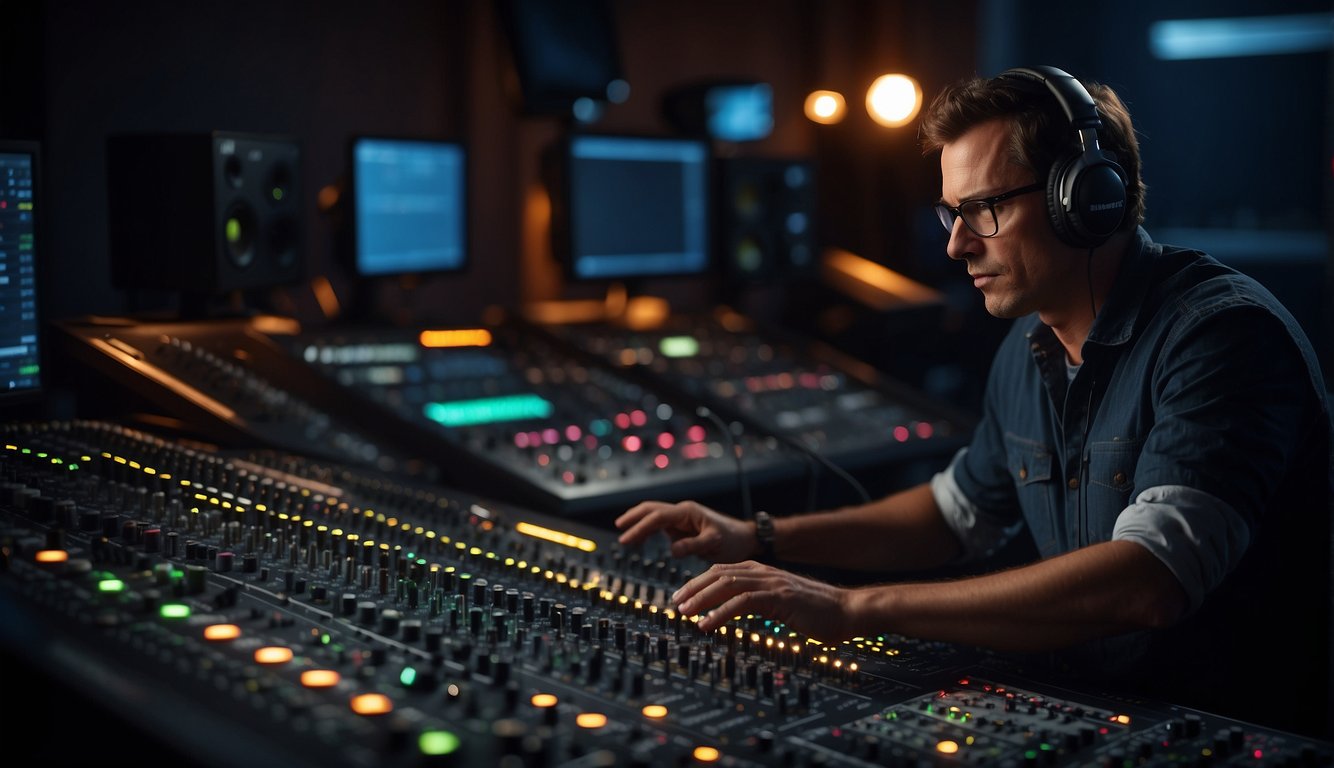
Sound design is an essential aspect of filmmaking that can significantly impact the viewer’s experience. The sound can affect a scene’s mood, atmosphere, and tension, helping to tell the story and immerse the audience in the film’s world.
Creating Atmosphere and Mood
Sound is a powerful tool for creating atmosphere and mood in a film. The right sound effects, music, and dialogue can transport the viewer to a different time and place, making them feel like they are part of the story.
For example, the sound of waves crashing on the shore or birds chirping in the forest can create a sense of calm and relaxation, while the sound of a thunderstorm or a ticking clock can create tension and anxiety.
Building Tension and Suspense
Sound is also critical for building tension and suspense in a film. A sudden loud noise or a quiet whisper can make viewers jump out of their seats or hold their breath in anticipation. The use of silence can also be an effective way to create tension, as it can make the viewer feel uncomfortable and uneasy.
Sound and Storytelling
Sound is not just about creating atmosphere and tension; it is also an essential tool for storytelling. The sound can help to convey important information to the viewer, such as a character’s emotions, thoughts, and motivations. For example, the sound of a character’s heartbeat or breathing can indicate fear or anxiety, while the sound of a ticking clock can suggest that time is running out.
In conclusion, sound design is a crucial aspect of filmmaking that can significantly impact the viewer’s experience. By creating the right atmosphere and mood, building tension and suspense, and using sound to tell the story, filmmakers can immerse the audience in the film’s world and create a truly unforgettable experience.
Challenges in Sound Design
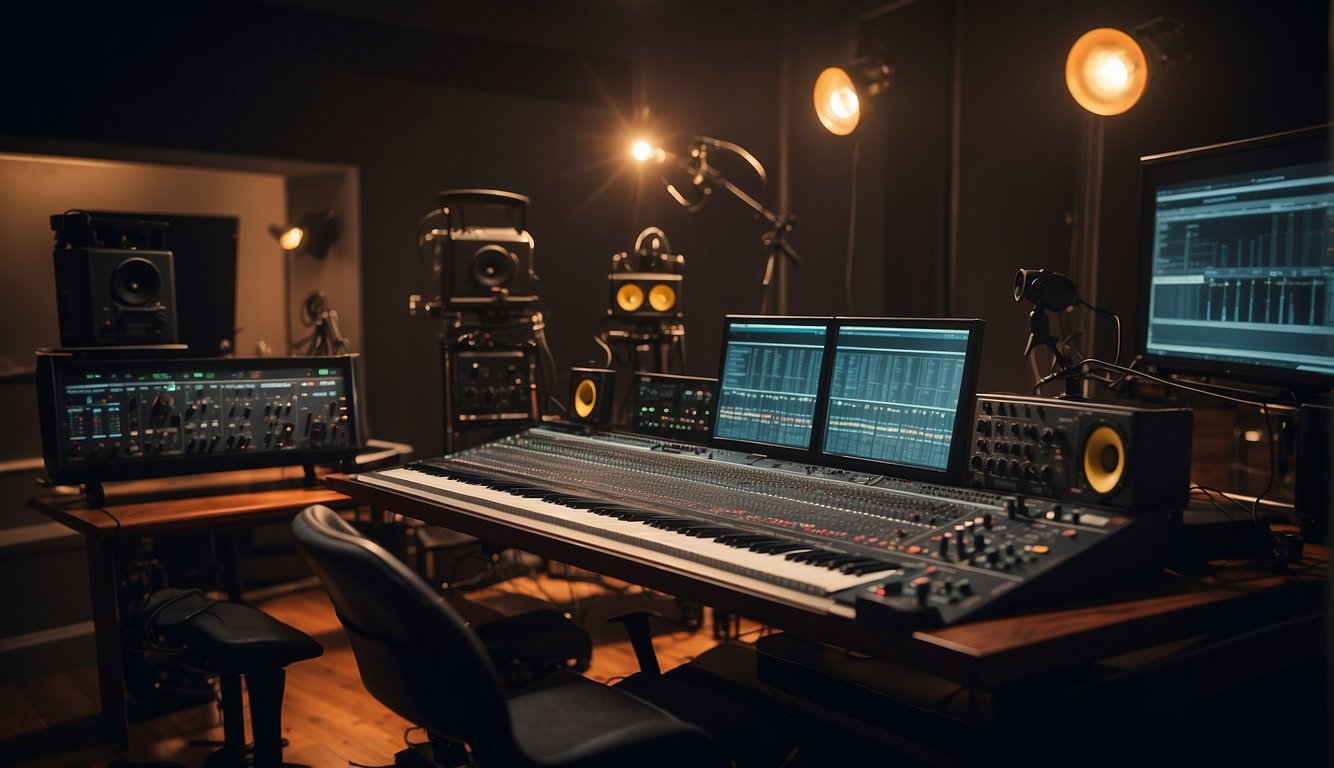
When it comes to sound design in film, there are several challenges that you may encounter. These challenges can range from balancing creativity and realism to working with budget constraints and managing resources effectively.
Additionally, you’ll need to work closely with the visual side of filmmaking, including cinematography and directing, to ensure that the sound design complements the visuals seamlessly.
Balancing Creativity and Realism
One of the primary challenges of sound design is finding the right balance between creativity and realism. While you want your sound design to be unique and creative, you also need it to be believable and realistic.
Finding the right balance between the two can be tricky, as you don’t want your sound design to be too over-the-top or distracting.
Budget Constraints and Resource Management
Another significant challenge of sound design in film is working with budget constraints and managing resources effectively.
Sound design can be costly, and you’ll need to find ways to stay within your budget while still achieving the desired results. This may involve using more affordable resources, such as stock sound effects, or finding creative ways to use your available resources.
Working with the Visual Side of Filmmaking
Finally, sound design in film requires close collaboration with the visual side of filmmaking. You’ll need to work closely with cinematographers and directors to ensure that the sound design complements the film’s visual elements seamlessly. This may involve adjusting the sound design to match the pacing and tone of the visuals or finding ways to enhance the visual storytelling through sound.
In conclusion, sound design in film can be a challenging but rewarding process. By balancing creativity and realism, managing resources effectively, and working closely with the visual side of filmmaking, you can create a sound design that enhances the overall cinematic experience for your audience.
Innovative Techniques and Technologies
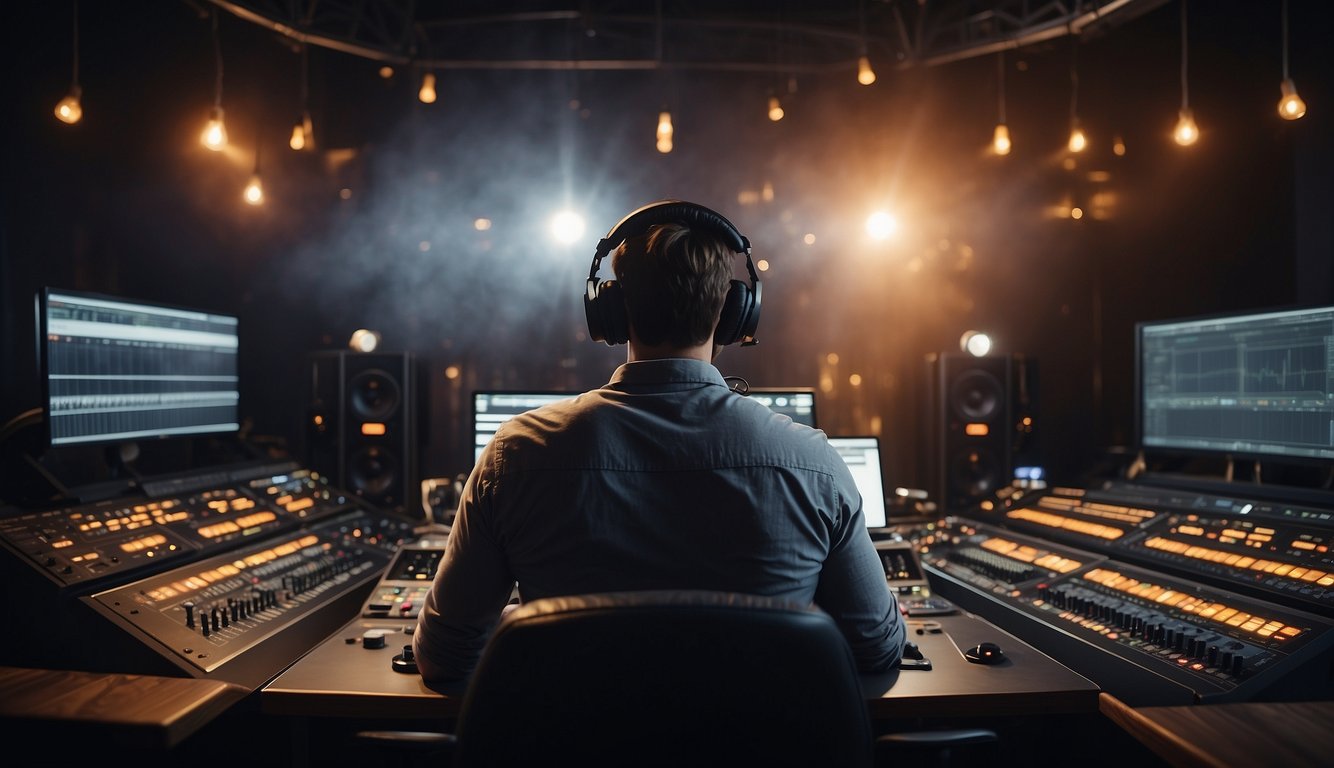
The Evolution of Sound Design
Sound design has come a long way since its inception in the early days of cinema. In the past, sound design was limited to live performances, where musicians would play music and sound effects to accompany the film.
With the advent of technology, sound design has become an integral part of filmmaking. Soundscapes and sampling have revolutionized the way sound is used in films.
One of the most influential sound designers in the industry is Ben Burtt, known for his work on Star Wars. Burtt’s innovative techniques, such as using animal sounds to create the lightsaber sound, have become iconic in the industry.
Influential Sound Designers and Their Work
Another influential sound designer is Gary Rydstrom, who has worked on films such as Jurassic Park and Saving Private Ryan. Rydstrom is known for his ability to create immersive soundscapes that transport the audience into the film’s world.
Denis Villeneuve’s Blade Runner 2049 is a recent example of how sound design can create a unique and immersive experience. The film’s sound design, which Theo Green and Mark Mangini did, was praised for its ability to create a futuristic and dystopian world through sound.
Emerging Trends in Sound Design Software
The use of sound design software has become increasingly popular in recent years. These software programs allow sound designers to create and manipulate sound in previously impossible ways. Some of the most popular sound design software programs include Pro Tools, Logic Pro, and Ableton Live.
In conclusion, sound design is an essential aspect of filmmaking. With the help of innovative techniques and technologies, sound designers can create immersive soundscapes that transport the audience into the film’s world. The evolution of sound design, influential sound designers, and emerging trends in sound design software all contribute to the advancement of the industry.
Sound Design in Other Media
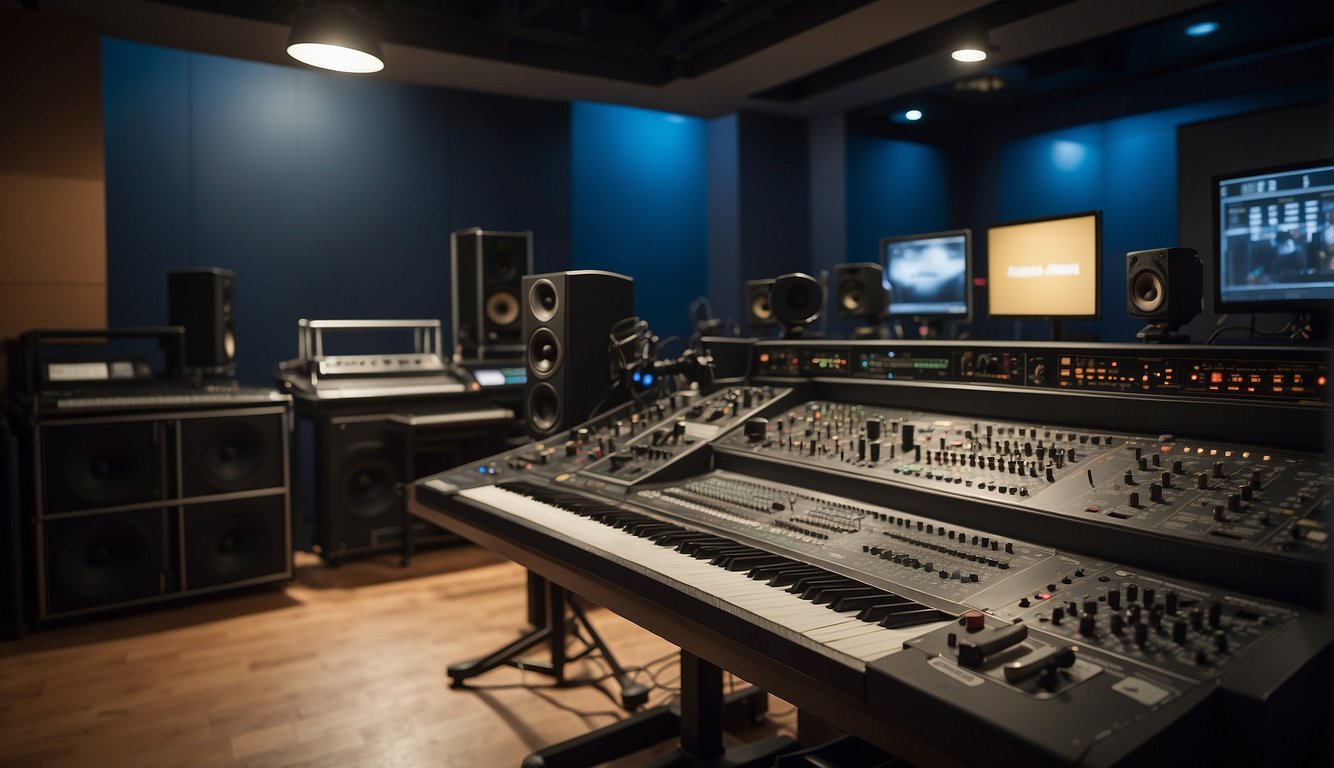
Sound design is not limited to film, as it is an essential part of various other media as well. This section will explore how sound design is used in different media.
Television and Broadcast
Television shows and broadcast media rely heavily on sound design to create an immersive experience for the viewers.
Audio engineers and sound mixers work together to create a soundscape that enhances the visuals and adds to the overall mood and tone of the show.
Sound effects, music, and dialogue are crucial in creating an emotional connection with the audience.
Gaming and Interactive Content
Sound design is also an integral part of the gaming industry. It helps to create an immersive experience for the players and adds to the overall gameplay.
Audio engineers and sound designers work together to create a soundscape that enhances the game’s visuals and adds to the overall mood and tone of the game. Sound effects, music, and voice acting are crucial in creating an emotional connection with the players.
Theater and Live Performances
Sound design is also used in theater and live performances. It helps to create an immersive experience for the audience and adds to the overall mood and tone of the performance.
Audio engineers and sound designers work together to create a soundscape that enhances the visuals and adds to the overall emotional impact of the performance. The use of sound effects, music, and voice acting is crucial in creating an emotional connection with the audience.
In conclusion, sound design is essential to various media, including television, games, theater, and live performances. Audio engineers and sound designers work together to create a soundscape that enhances the visuals and adds to the overall emotional impact of the media. The use of sound effects, music, and voice acting is crucial in creating an emotional connection with the audience.
Legal and Ethical Considerations
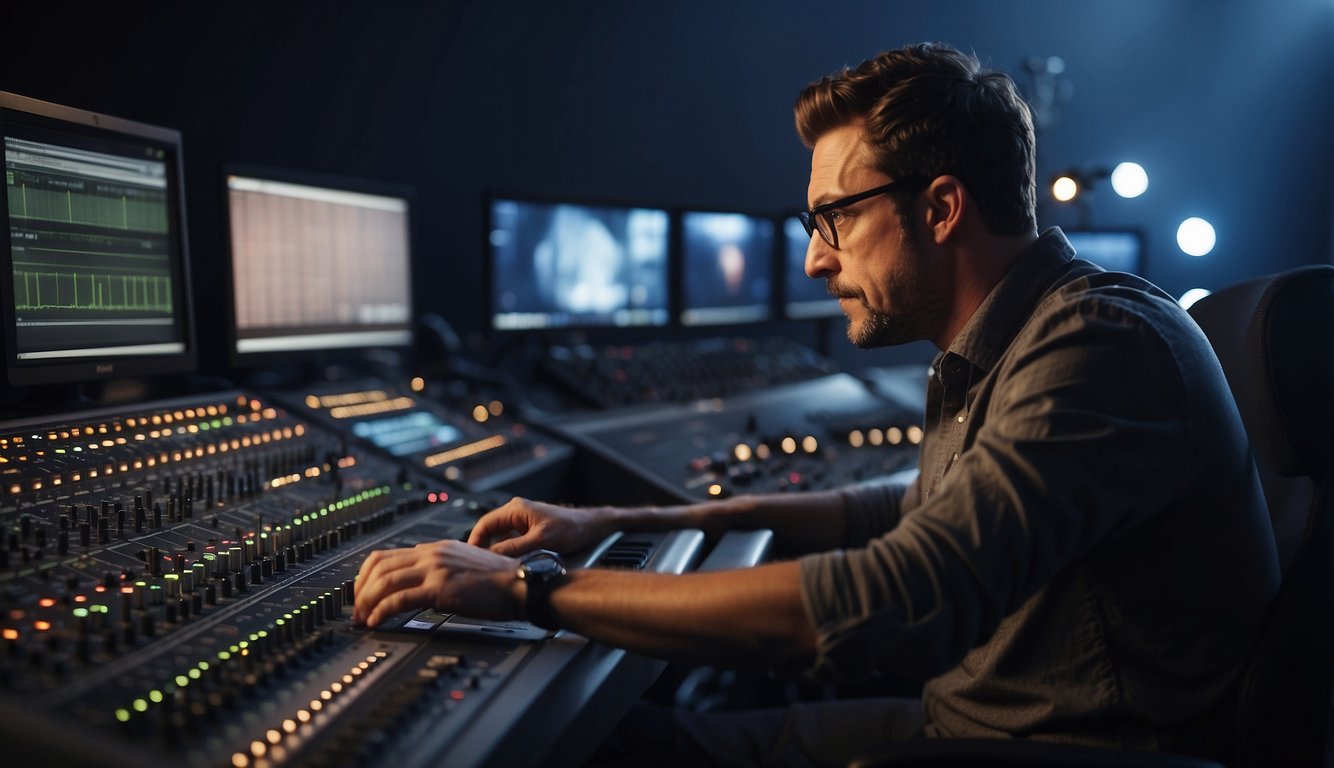
Licensing and Copyright Issues
When it comes to sound design in film, it is important to consider licensing and copyright issues. You must ensure that you have the legal right to use any sound effects or music you include in your film. Failure to do so can result in legal action being taken against you, which can be costly and time-consuming.
To avoid legal issues, you should always obtain the necessary licenses and permissions before using any sound effects or music in your film.
Many websites offer royalty-free sound effects and music you can use in your film without worrying about licensing issues. However, reading the terms and conditions carefully is important to ensure you use the content legally.
Ethics in Sound Representation
In addition to licensing and copyright issues, it is also important to consider the ethical implications of sound representation in film.
Sound can be used to create a particular atmosphere or emotion, and it is important to ensure that the sounds you use are authentic and do not misrepresent any particular group or culture.
For example, suppose you are creating a film that involves a particular culture or ethnicity. In that case, you need to ensure that the sounds you use are authentic and do not perpetuate stereotypes. Researching and consulting with experts is essential to ensure that the sounds you use are accurate and respectful.
Overall, it is important to consider both the legal and ethical implications of sound design in film. By doing so, you can create a film that is not only legally sound but also respectful and authentic.
